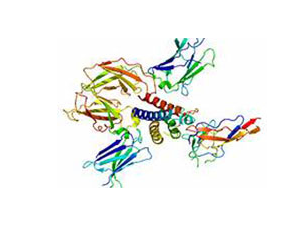Conventional dosage forms and systemic administration of siRNA show therapeutic effects in animals

The Journal Nature Biotechnology published an article by scientists at Harvard University and the University of Massachusetts on the discovery of siRNA drugs for toxemia in pregnancy. According to the difference between soluble FLT1 (sFLT1, also known as sVEGFR1) and full-length FLT1 on membrane, we found siRNA sequence selectively knocking down sFLT1. In the mouse model, siRNA without special nanopreparations significantly reduced sFLT1 levels in plasma and placenta. In the pregnant gorilla UPI model, a single dose of siRNA (subcutaneous or intravenous is basically the same) also reduced sFLT1 levels in plasma and alleviated toxemia symptoms. No obvious toxicity was observed at the effective dose, but the offspring were slightly lighter. This work demonstrates that general siRNA drug delivery systems can also treat diseases outside the liver for specific targets.
Drug Source Analysis
Pregnancy toxemia incidence is quite high, affecting 5-10% of pregnant women. Every year 76,000 pregnant women and 500,000 babies around the world die from the disease. There is no good way to do it except to induce labor. The cause of this disease is the overexpression of sFLT, which leads to elevated blood pressure, proteinuria and other complications in pregnant women. Symptoms disappear within 2-3 days after delivery, and sFLT1 can also relieve symptoms without induction of labor, but the treatment obviously has its own risks and is not available in any hospital. Symptoms usually begin at 20 weeks of pregnancy, so if the drug can control the symptoms of 10 weeks, the infant survival rate will be much higher, control 2-4 weeks can be considered clinically meaningful.
Because the sequence of sFLT1 is almost identical to the extracellular domain of full-length FLT1, there is little selectivity for small molecules and antibodies. But sFLT1 has hundreds of specific bases compared with full-length FLT1, making siRNA a unique choice. In addition, the placenta is the most important secretory organ of sFLT1, and the placental blood flow is relatively large, so the siRNA of common dosage forms is easy to accumulate here. Although most of the siRNA was removed from the liver and kidneys, 7% of the drugs accumulated in the placenta. Because there is almost no expression of sFLT1 in normal tissues, detachment side effects are not the main obstacle. Another important advantage is that sFLT1 can significantly alleviate symptoms by knocking down 50%, which also enlarges the treatment window. In fact, shRNA was used to knock down sFLT1 thoroughly before, but it had hemorrhagic side effects. Finally, toxemia of pregnancy is an emergency, which takes only a few weeks to administer. These factors make it possible to administer general dosage forms and systematically.
Of course, the disease involves pregnant babies, so the safety requirements are higher. Animal experiments only observed that offspring weighed slightly less, but long-term toxicity and side effects required a lot of research. SFLT1 has three main mRNAs. Many experiments have used a 1:1 combination of siRNA, rather than a single drug, which is a barrier to development. Because targeting delivery is limited, the drug requires a higher dose (10-40 mpk). In order to increase cell ingestion, thiophosphate modification was performed on the directed RNA strand, cholesterol coupling was used on the other strand, and chemical modification (fluorination and methylation) was also performed on the base body to increase stability, so the safety and immunogenicity of complex drugs need to be carefully studied.
The field of siRNA has made rapid progress recently, and the first drug Onpattro has been launched this year. However, due to the limitation of delivery technology, most of the drugs in research are targeted at liver targets. Both nano-delivery formulations and GalNAc coupling can only selectively target liver cells. Obviously, there are some targets beyond the liver that other technologies can't be used now. Although it is still impossible to fully target targets other than liver, deep digging of biological processes and specific targets such as sFLT1 can still be used as siRNA drugs. (Bioon.com, Biovalley)


